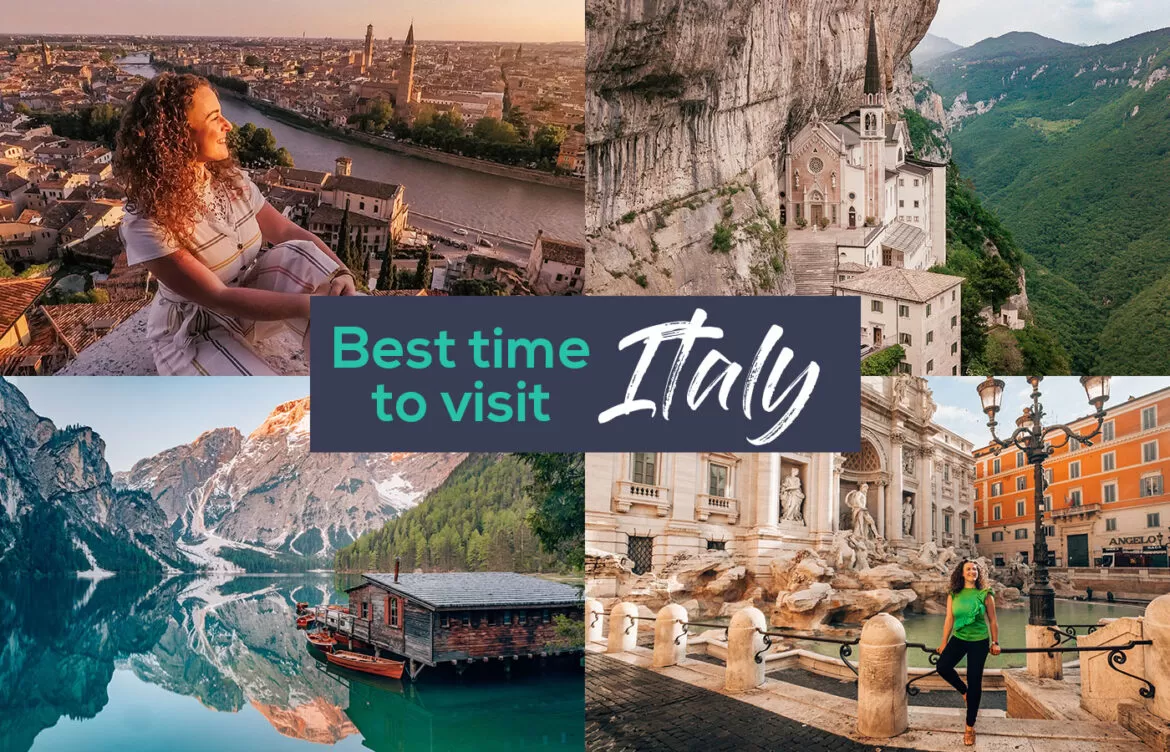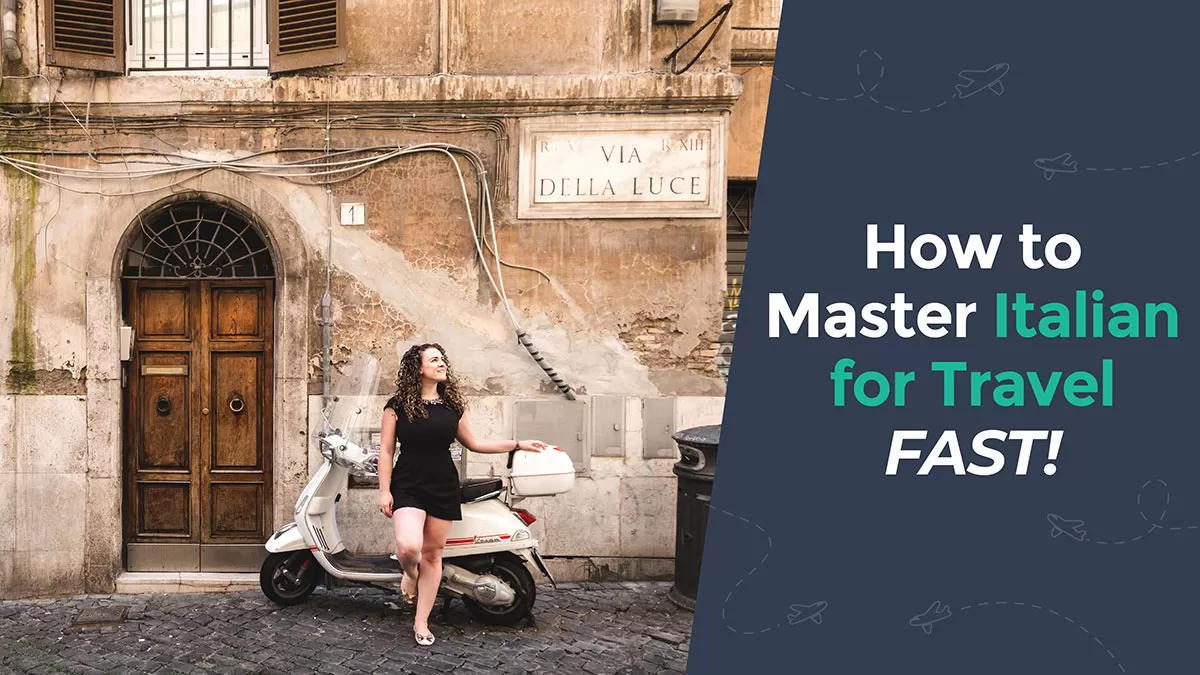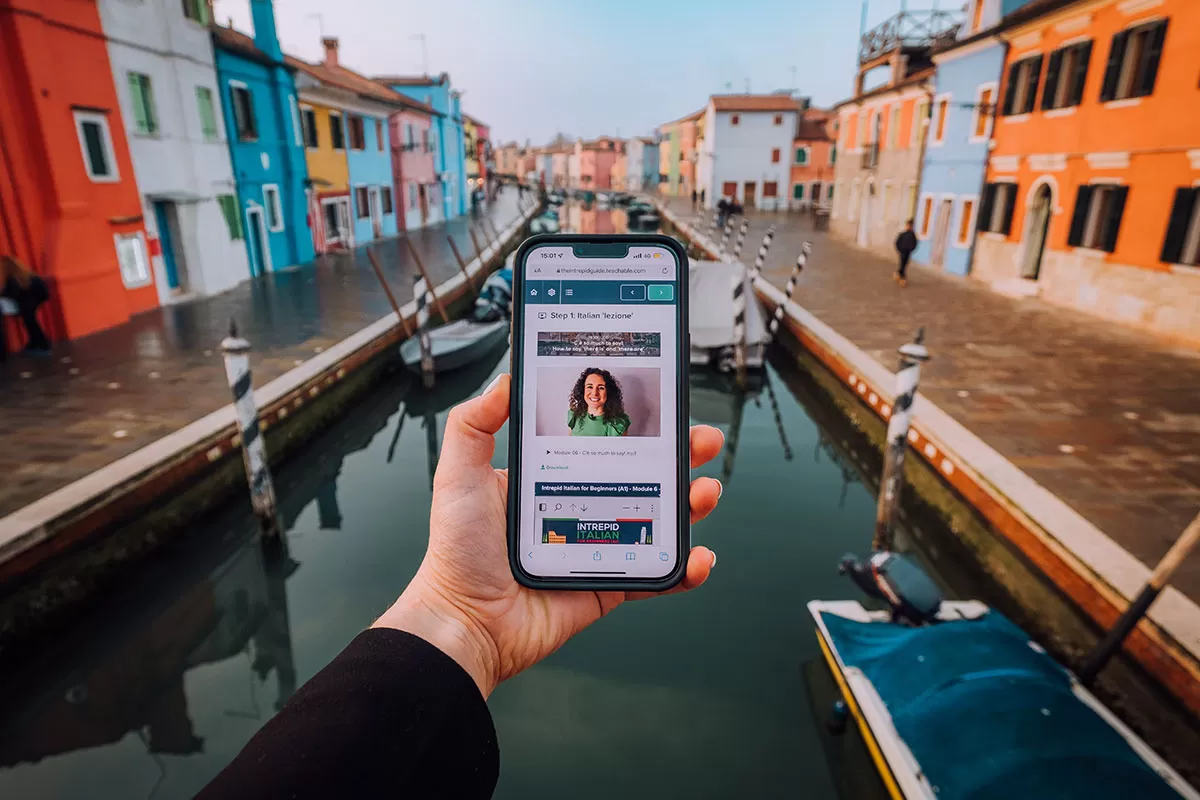Great food, idyllic beaches, gorgeous cities, history and culture… There are honestly so many reasons to visit Italy! Despite being a relatively small country, Italy is home to more than 50 UNESCO sites (it’s currently the country with the highest number), including beautiful natural sites, such as the Aeolian Islands, Dolomites and Mount Etna, as well as cultural landscapes, like Amalfi Coast and Cinque Terre. On top of this, add countless archaeological and urban sites, such as Florence’s historic centre, the trulli in Alberobello and Piazza del Duomo in Pisa, just to name a few.
Affectionately called lo stivale for its boot shape, Italy is a country that offers many options for tourists to choose from. If you’re wondering what the best time to visit Italy is, well, it all comes down to your preferences and the type of traveller you are.
If, for example, you’re passionate about art and wish to see the main museums in Italy, you might want to go to Florence, Rome or Venice in winter as there will be fewer people around. If, on the other hand, you’re a beach lover, the best time to visit Italy would be between May and October, when you can enjoy sunny weather and temperate waters.
Whatever your reason for visiting Italy, this guide, which is broken down by seasons, most popular cities and activities, will help you understand when is the best time to visit Italy so you are well informed so you plan and enjoy your trip to the fullest!
Iniziamo! (Let’s get started!)
Here’s what we’ll cover. Click on any title to skip to each section
- Seasons and temperatures in Italy
- Best time to travel to Italy’s popular cities
- Best time of year to visit Italy according to your travel style
- Cheapest time to visit Italy
- The verdict: When is the best time to visit Italy?
Seasons and temperatures in Italy
Italy enjoys four proper seasons, each one with different temperatures and rain patterns. Given its particular shape, length and topography, the weather in Italy can vary greatly from the north to the south. Each region differs not only in landscape and culture, but also in climate.
The Alps at the northern border and the spine of mountains running across the boot, called Apennines, have a significant impact on the affected regions, generally creating cooler temperatures in the north (with cold, wet winters and mild summers) and a warmer climate in the south (with mild winters and warm, dry summers).
Rainfall occur more frequently in winter rather than in summer, although throughout the whole year it can be pretty humid along the coasts and the Po Valley area (yes, where delicious Parmigiano comes from!).
Weather-wise, you could say that the best time to travel in Italy is from April to June and September to October, when temperatures are milder. It is best to avoid the heat of August, whose high temperatures are felt throughout the country (except in mountain regions that enjoy fresh cool breezes). The south enjoys more sunshine for most of the year.
In the following sections, you’ll find more details about average temperature and rainfall which is broken down by season and month. Have a look at the information and charts below to make sure you pack according to the season you want to go to Italy!
Spring in Italy
Best for: nature, general sightseeing without the crowds
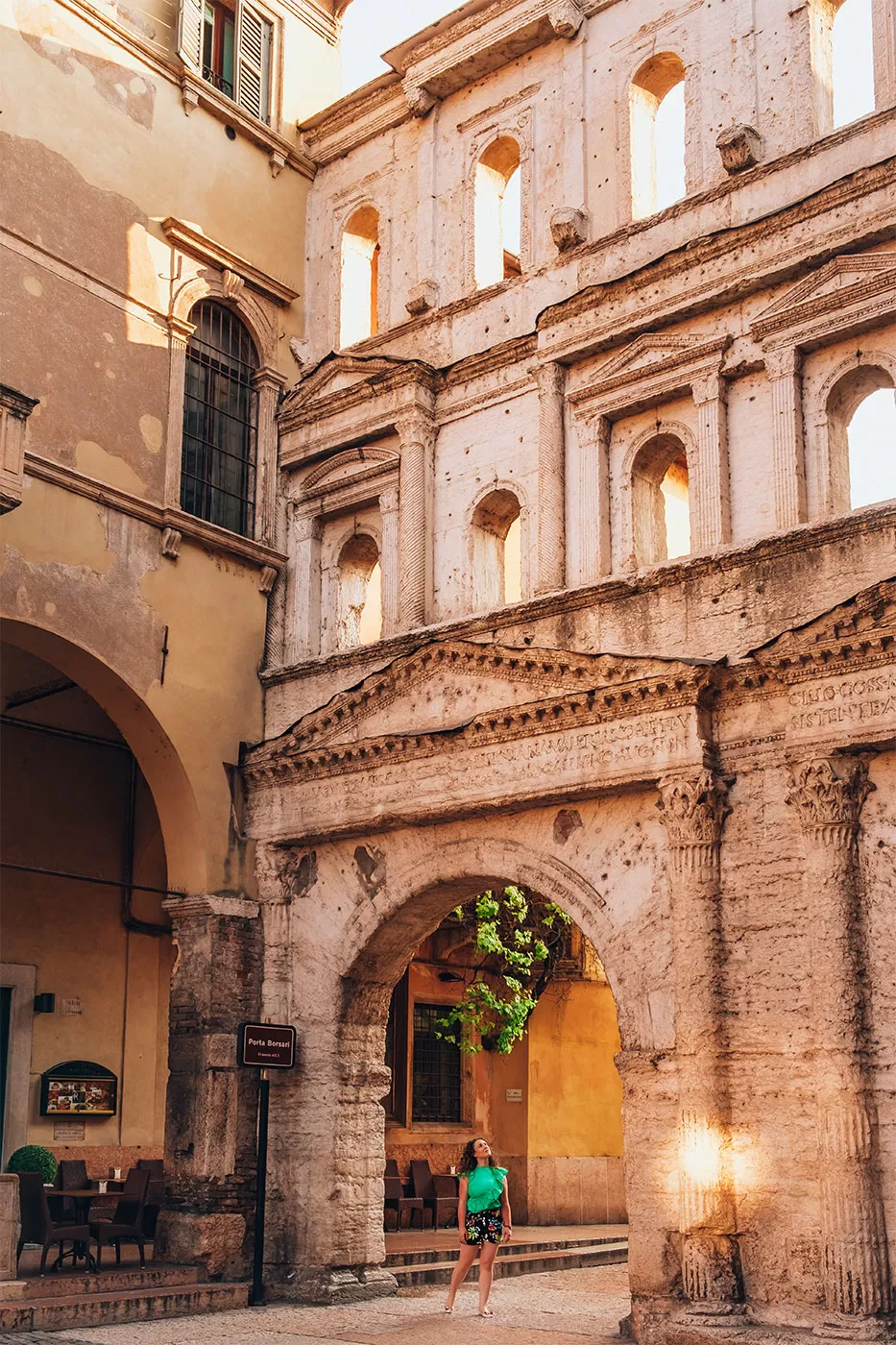 With the winter season coming to an end, Italy prepares itself to welcome la bella stagione (the nice season), aka spring or la primavera.
With the winter season coming to an end, Italy prepares itself to welcome la bella stagione (the nice season), aka spring or la primavera.
Spring is definitely a wonderful time visit Italy, not only because the days become longer, the weather is milder and the sun bullies its way through the clouds, but also because crowds are smaller and you can usually find good deals on flights, accommodation and tours compared to the summer months.
Just before the bustling peak season, spring is the ideal time to visit most destinations, particularly the south.
During spring, nature is at its best, with festivals of various kinds taking place all over the country and the beautiful show of Alpine valleys in bloom. You can take advantage of the Easter holidays to discover something new and unusual and take part in a historical re-enactment in one of the many medieval villages on the peninsula, or you can enjoy the several flower species sprouting from the ground that decorate parks and gardens all over Italy.
If you’re looking for green parks where you can admire the colours of flowers, savour the scent and relax under sun, here are some of the best you can visit in Italy:
- Sigurtà Garden Park, in the province of Verona, an area of about 60 hectares that is home to countless natural attractions.
- The Iris Garden in Florence, the world’s most famous panoramic terrace just a stone’s throw from Piazzale Michelangelo.
- Villa Taranto Botanical Gardens, in Piedmont.
- Trauttmansdorff Castle in the Trentino South-Tyrol region, which brings together, exotic and Mediterranean landscapes with breathtaking views of the surrounding mountains.
Spring temperatures in Italy
| Average temperature °C | Average temperature °F | Average Rainfall (mm) | |
|---|---|---|---|
| March | |||
| Northern Italy | 3-13 | 36-55 | 61 |
| Central Italy | 4-14 | 40-57 | 70 |
| Southern Italy | 8-16 | 46-60 | 76 |
| April | |||
| Northern Italy | 7-16 | 45-60 | 74 |
| Central Italy | 8-18 | 46-64 | 62 |
| Southern Italy | 10-19 | 50-66 | 68 |
| May | |||
| Northern Italy | 12-22 | 53-71 | 73 |
| Central Italy | 12-23 | 53-73 | 46 |
| Southern Italy | 14-24 | 57-75 | 44 |
Summer in Italy
Best for: nice weather and the beach
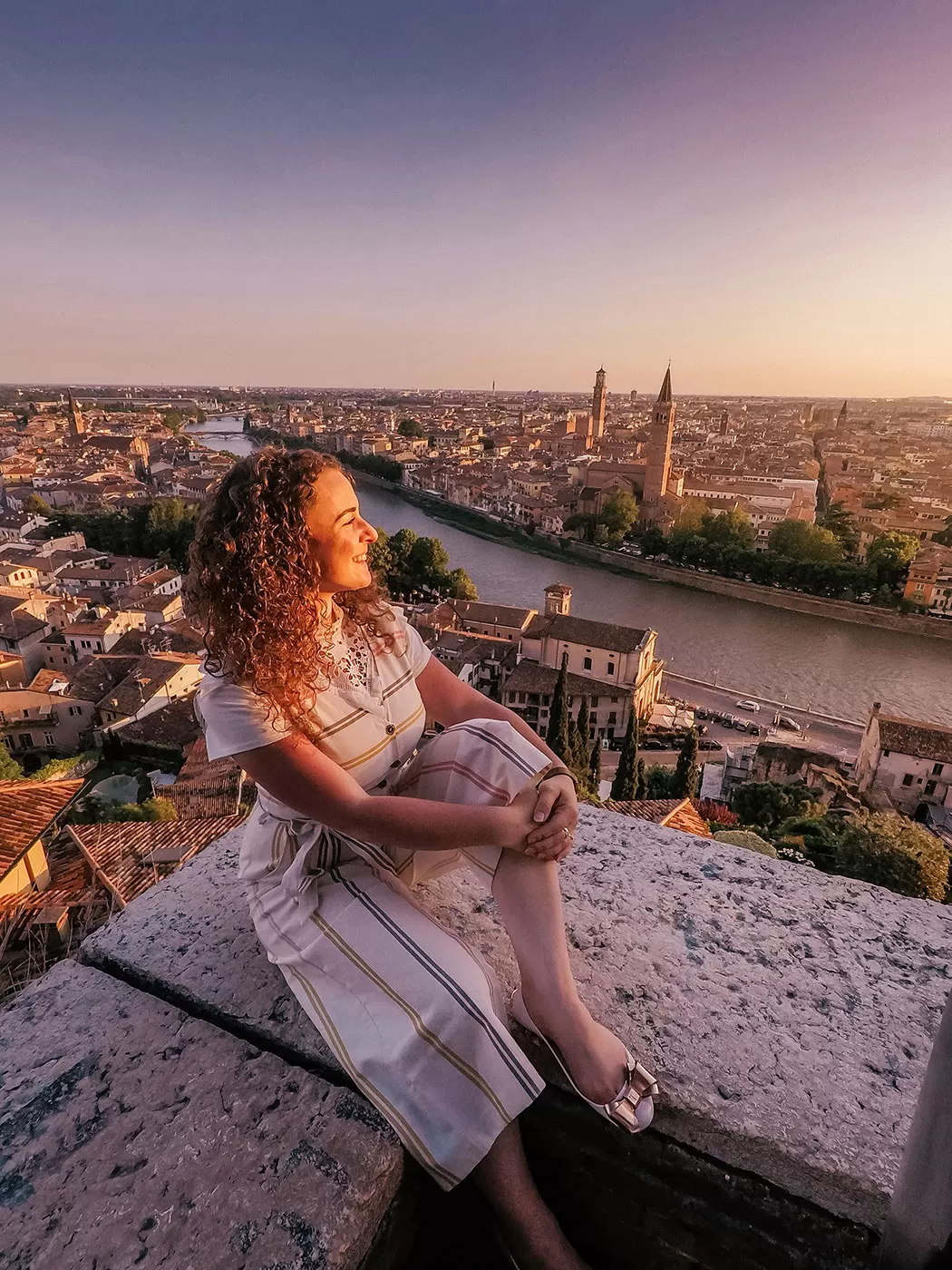 Summer is generally very hot in Italy, with average temperatures well above 24°C degrees. It is normally much warmer during the day than at night and the long daylight hours allow enjoying each day to its fullest. In the northern regions, the climate is cooler, but as you go down south, the heat is much stronger. There is very little rainfall in summer with the exception of the Alpine zone, affected by summer storms and precipitation.
Summer is generally very hot in Italy, with average temperatures well above 24°C degrees. It is normally much warmer during the day than at night and the long daylight hours allow enjoying each day to its fullest. In the northern regions, the climate is cooler, but as you go down south, the heat is much stronger. There is very little rainfall in summer with the exception of the Alpine zone, affected by summer storms and precipitation.
If you are a person who suffers from scorching heat and mugginess, you can seek shelter along the beautiful coasts of Apulia, Sicily or Calabria, which benefit from more favourable environmental conditions.
In many Italian cities like Florence, Rome or Bolzano, the heat can be unbearable, while in the mountains and lakes the weather is milder. This makes summer the best time to visit Italy for its popular destinations like the Dolomites or Lake Garda, despite being packed up with tourists.
Thanks to the perfect seawater temperature, destinations along the coast are ideal during the summer months if you like to swim. Mind that August is the time when most locals take their annual long holidays so trying to get a spot on the beach can be tricky sometimes! Expect to get up early to claim your spot.
In terms of tourist flows, Summer, particularly the months of July and August, is peak season in Italy, which means everything is busier and more expensive than the rest of the year. Be prepared to pay significantly more for accommodation and to wait in long queues to see attractions along with masses of tourists.
Summer temperatures in Italy
| Average temperature °C | Average temperature °F | Average Rainfall (mm) | |
|---|---|---|---|
| June | |||
| Northern Italy | 15-27 | 59-80 | 78 |
| Central Italy | 15-27 | 59-90 | 35 |
| Southern Italy | 16-28 | 60-82 | 29 |
| July | |||
| Northern Italy | 18-29 | 64-84 | 63 |
| Central Italy | 19-30 | 66-86 | 17 |
| Southern Italy | 20-31 | 68-87 | 21 |
| August | |||
| Northern Italy | 18-29 | 64-84 | 77 |
| Central Italy | 19-30 | 66-86 | 33 |
| Southern Italy | 22-31 | 71-87 | 37 |
Autumn (Fall) in Italy
Best for: food and wine, festivals, warmer sea temperatures on the coast with fewer crowds
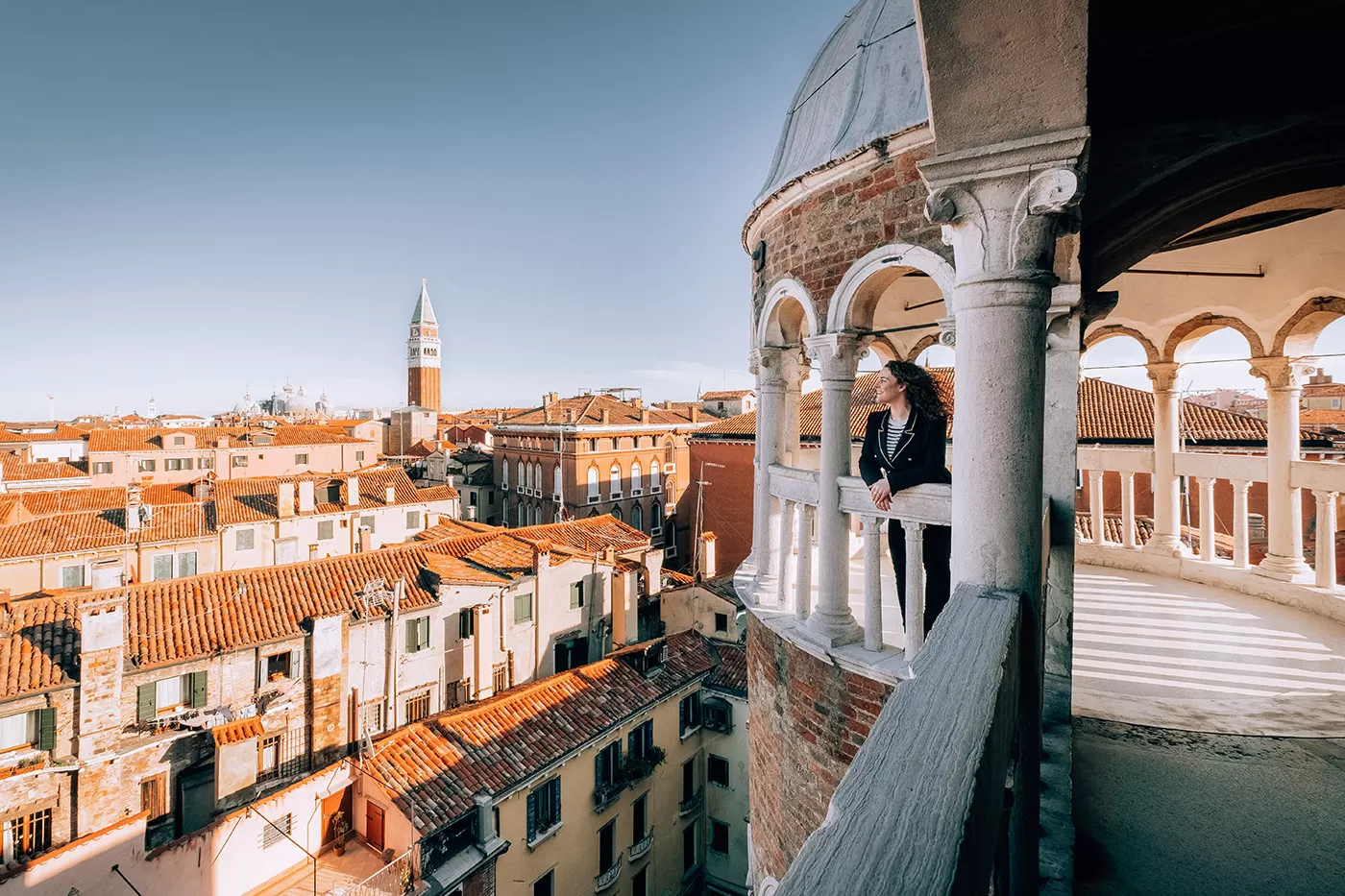 Autumn, as well as spring, is a great time to visit Italy: the peak season has ended and the crowds decrease which creates ideal conditions to visit major cities like Verona, Florence, Milan, Rome, Venice and Turin.
Autumn, as well as spring, is a great time to visit Italy: the peak season has ended and the crowds decrease which creates ideal conditions to visit major cities like Verona, Florence, Milan, Rome, Venice and Turin.
Depending on the year, the month of October sometimes presents itself with the characteristics of a waning summer; other times, however, amid the greyness of the Po Valley fogs, stormy winds and flooding rains, it gives a preview of the rigours of the winter season. Even though the climate conditions can be unpredictable, in Autumn temperatures are generally mild and pleasant during the day.
In October, daylight hours start decreasing and the weather starts to cool off. The rains begin to arrive and between November and December they usually become heavier; it is no coincidence that this is the time when Venice tends to flood with high water.
While two important film festivals take place in Venice and Rome, don’t forget that in the southern regions you can still take advantage of a few more warm days and go for a dip in the sea!
Autumn also brings with it the long-awaited food & wine festivals and the grape harvest, so make way for wine and truffles. Foliage envelops us with its warm colours, the forests are tinged with yellow, orange, red and purple. If you want to take part in one of these vibrant festivals and see the countryside bursting into amazing colours, regions like Tuscany, Le Marche, Umbria and Piedmont are perfect to experience the wine harvest and truffle hunting, or for mushroom and chestnut picking.
All over Italy, you can find sagre paesane, village festivals, which are a significant part of Italian culture. Here are some of the most beautiful ones:
- The Apple Festival in Cles (Trentino South-Tyrol), usually on the second weekend of October.
- Eurochocolate, one of the most famous gastronomic events, with rivers of excellent chocolate of all shapes and types flooding, which takes place in mid-October in Perugia.
- The Sagra dell’Uva di Marino (Rome), which takes place the first weekend of October.
- The Chili Festival in Diamante (province of Cosenza, southern Italy), in mid-September.
Autumn temperatures in Italy
| Average temperature °C | Average temperature °F | Average Rainfall (mm) | |
|---|---|---|---|
| September | |||
| Northern Italy | 14-24 | 57-75 | 69 |
| Central Italy | 15-25 | 59-77 | 73 |
| Southern Italy | 17-27 | 62-80 | 71 |
| October | |||
| Northern Italy | 8-16 | 46-60 | 77 |
| Central Italy | 10-20 | 50-68 | 103 |
| Southern Italy | 14-23 | 57-73 | 112 |
| November | |||
| Northern Italy | 3-10 | 37-50 | 93 |
| Central Italy | 5-15 | 41-59 | 114 |
| Southern Italy | 10-19 | 50-66 | 141 |
Winter in Italy
Best for: festive cheer, winter sports, skiing, visiting museums and indoor attractions
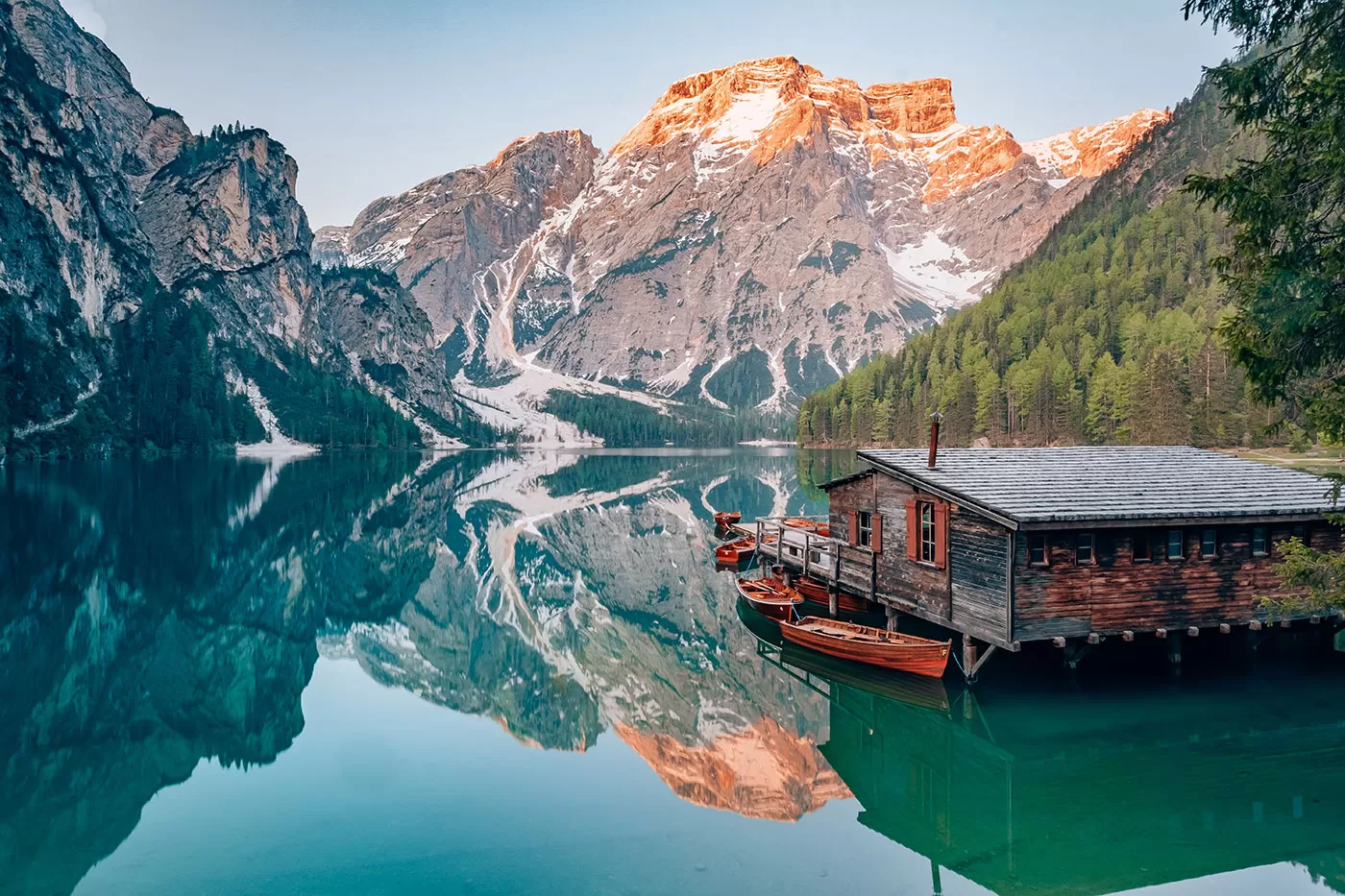 If you travel to Italy in winter, you can expect cold temperatures and even snow in the north, while in Sicily, Sardinia and the south, winters are generally milder. Heavy rains often occur between November and December while the rest of winter is quite sunny (although daylight hours reduce dramatically) and characterised by the crisp air. During winter, the mountains offer the best weather and ideal conditions in Italy for both skiing and snowboarding.
If you travel to Italy in winter, you can expect cold temperatures and even snow in the north, while in Sicily, Sardinia and the south, winters are generally milder. Heavy rains often occur between November and December while the rest of winter is quite sunny (although daylight hours reduce dramatically) and characterised by the crisp air. During winter, the mountains offer the best weather and ideal conditions in Italy for both skiing and snowboarding.
The month of December gets busy around the Christmas holidays: after the grey days of November, in December the streets come alive with Christmas markets stalls, decorations and lights. The festive cheer reaches its peak around Christmas and many Italians travel through the country to visit family or go skiing in the mountains.
The months of January and February are great if you are looking for bargains, since this is when flights and accommodation are cheaper and are more affordable, except of course for the ski resorts in the mountains.
Tourist flows reduce drastically after Christmas. Indoor attractions are much quieter and more pleasant to visit in winter, so this is the perfect time to appreciate the Uffizi Gallery or the Vatican Museums at your own pace, avoiding those never-ending and annoying queues.
In the south of Italy and the islands, in spite of the warm temperature and pleasant winter weather, most beach locations and seaside towns shut down and take a long break. Opening times of restaurants and attractions may vary in winter all over Italy.
Winter temperatures in Italy
| Average temperature °C | Average temperature °F | Average Rainfall (mm) | |
|---|---|---|---|
| December | |||
| Northern Italy | -1-5 | 30-41 | 63 |
| Central Italy | 3-10 | 37-50 | 96 |
| Southern Italy | 7-14 | 44-57 | 11 |
| January | |||
| Northern Italy | -2-5 | 28-41 | 49 |
| Central Italy | 1-8 | 33-46 | 79 |
| Southern Italy | 5-13 | 41-55 | 100 |
| February | |||
| Northern Italy | 0-8 | 32-46 | 53 |
| Central Italy | 3-10 | 37-50 | 70 |
| Southern Italy | 6-13 | 42-55 | 84 |
Best time to travel to Italy’s popular cities
Generally speaking, if you want to travel to Italy to visit a city, the shoulder seasons (spring and autumn) are best in terms of climate and things to do, while the low season is best in terms of budget.
In this section, we will look at the best time to visit three of Italy’s most popular cities: Rome, Florence and Venice. Regardless of what time of year you choose to visit these cities, it is generally best to avoid weekend crowds if possible. Tourist attractions tend to be much more crowded on Saturday and Sunday as well as on long weekends (called “ponti”, bridges, in Italian) as tourists and locals flock in for the weekend break.
Given Monday in Italy is usually a day-off for shops, mini-markets, restaurants, hairdressers and some attractions, the best time of the week to visit cities during the year is between Tuesday and Friday.
Best time to go to Rome
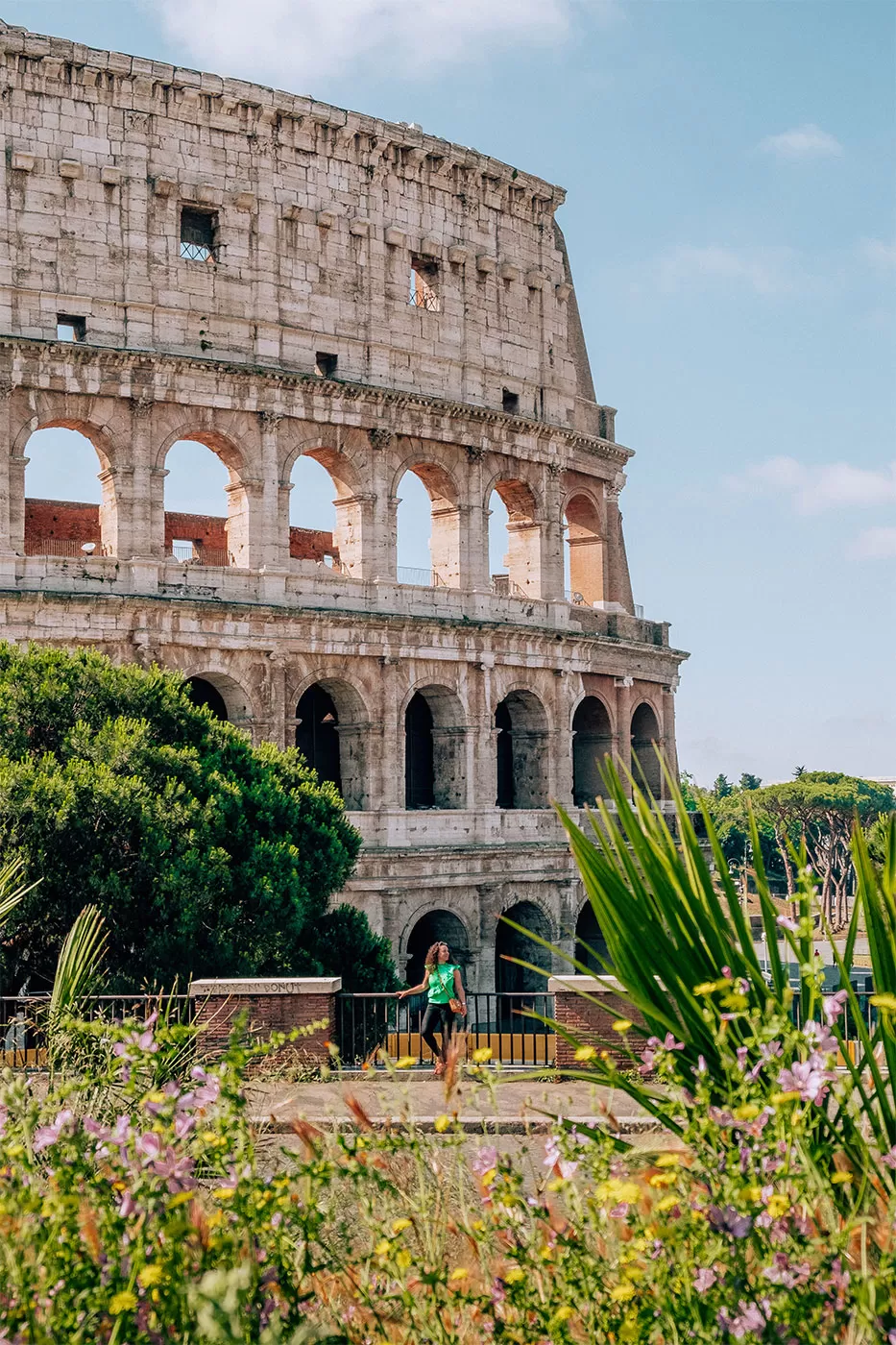 Rome is the perfect city to visit all year round! In all seasons, Rome has something to offer, thanks to the endless choice of unique things to see, its favourable climate and the many events, such as fairs, exhibitions and concerts. The city itself is like a giant open-air museum where you can stumble across history and art on every corner. In short, you will never get bored in Rome!
Rome is the perfect city to visit all year round! In all seasons, Rome has something to offer, thanks to the endless choice of unique things to see, its favourable climate and the many events, such as fairs, exhibitions and concerts. The city itself is like a giant open-air museum where you can stumble across history and art on every corner. In short, you will never get bored in Rome!
There are, however, a couple of things to keep in mind: winter and autumn are the seasons when it rains the most; autumn is very wet, while winter is cold, especially at night. Snow is rare in Rome. Since autumn in Rome is very wet and rainy, this is definitely not the best weather conditions for quiet sightseeing as the rain may get in the way of your stay in the city. However, you can take advantage of it and take your time when visiting the Vatican with its interesting museums (mind that Vatican Museums are closed most Sundays!) or pop into the Cinecittà Studios if you like movies and cinema.
In contrast, summer is very hot and sunny, with rare afternoon thunderstorms and high humidity.
If you travel to Rome on a low budget, in the months of November and February prices reach their lowest due to the drop in tourist flows caused by the weather, which brings in the low season. A similar situation occurs in late summer, especially in August, when the city empties due to high temperatures. If you don’t suffer from the heat and want to visit Rome in summer, try to plan your activities in the morning or evening to avoid the midday sun. A good solution for the heat is taking a walk along the river Tiber cooled by the gentle breeze, stopping in the various gardens and parks like the Bio Park and the Botanical Garden, both large and beautiful.
The best time to visit Rome is therefore in spring. During the spring months, the days are warm and pleasant, with temperatures around 15 °C (59 °F) that will allow you to take a nice tour of the main sites and explore the ancient city without suffering terribly from the heat. One event that takes place is the great May Day Concert, held every year in Piazza San Giovanni and completely free of charge. This is held to celebrate Labor Day and features some of the most famous Italian artists.
Best time to go to Florence
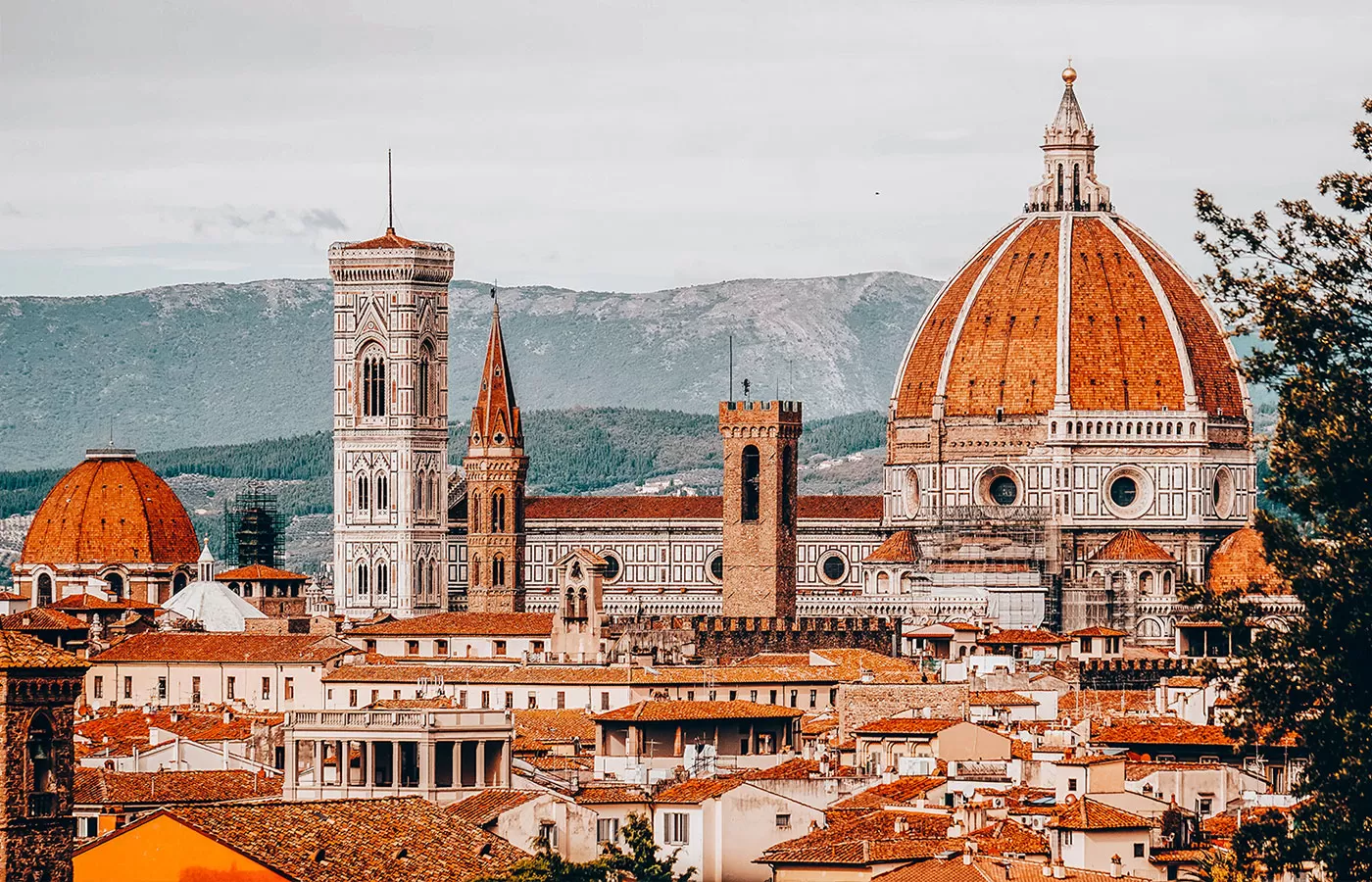
Duomo in Florence
The best time to visit Florence is from April to June and in September/October, that is, in the shoulder season, when the weather is mild, the prices acceptable and there are fewer tourists.
Florence’s climate is heavily influenced by its location, in a river basin, protected by the hills to the south and the slopes of the Apennines to the north, which means summer can be extremely suffocating! If you decide to go to Florence in July or August expect to suffer heat and mugginess. During these months, it is much better to head to the Tuscan countryside to see sunflower fields and enjoy plenty of fresh produce.
Winter, on the other hand, is cold and often wet. Average temperatures in January range from 1°C to 10°C and snowfalls are rare. Even though you won’t experience the city’s quaint charm, it can be a great way to retreat to museums and spend hours at the Uffizi Gallery in total solitude (they’re open from Tuesday to Sunday). Not to mention you’ll be able to save money on flights, accommodation, and tours.
Best time to go to Venice
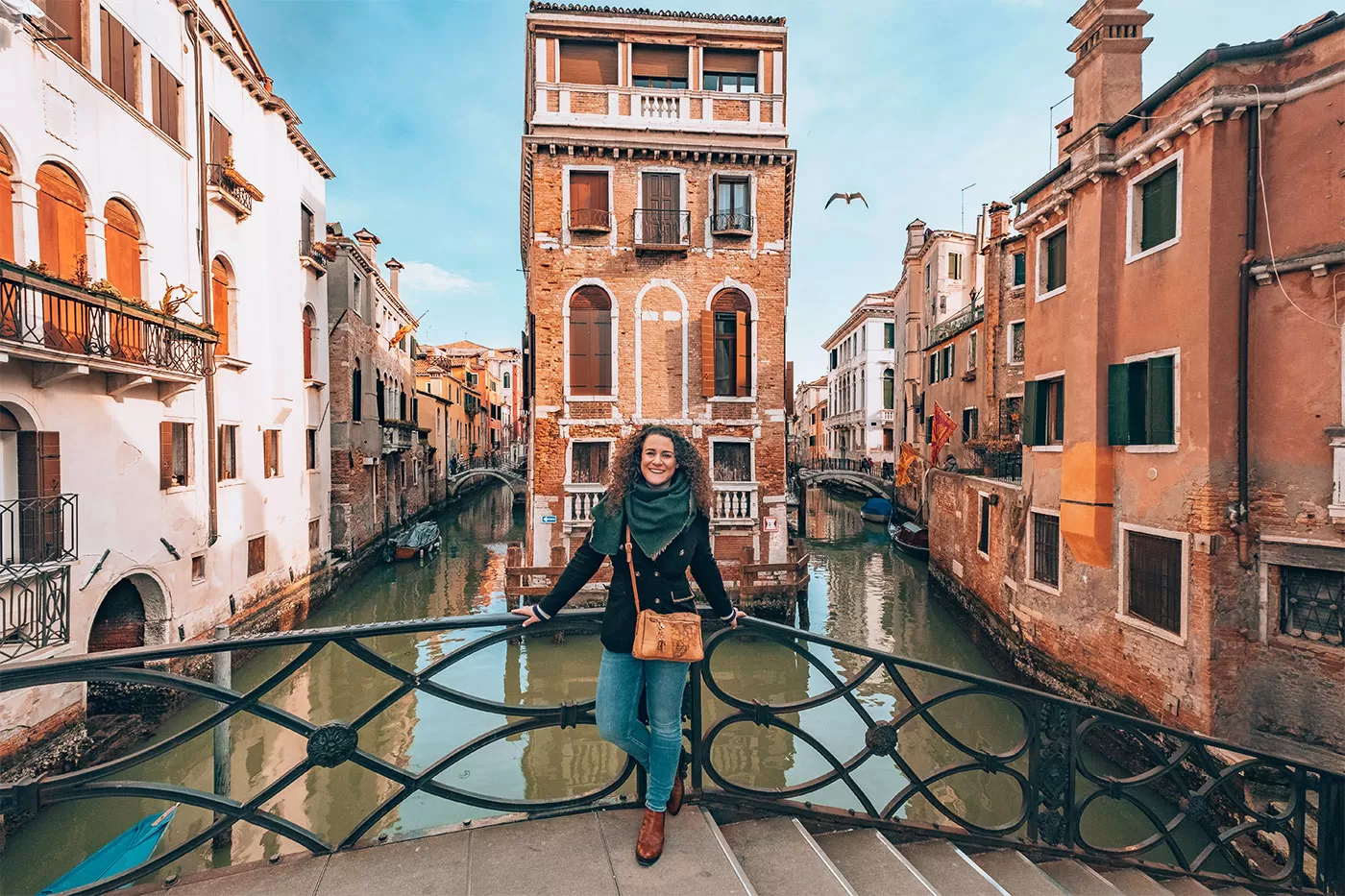 It is almost always peak season in the lagoon city. Its unique topography, dreamlike atmosphere, elaborate architecture and opulent palaces make Venice one of the world’s most visited places of all time.
It is almost always peak season in the lagoon city. Its unique topography, dreamlike atmosphere, elaborate architecture and opulent palaces make Venice one of the world’s most visited places of all time.
The city gives its very best in spring and between September and October. This is therefore the best time to visit Venice thanks to the pleasant weather, sunny sky, and fewer tourists than in the peak season. From June to August Venice is extremely crowded and the oppressive humid heat can be unbearable.
If you go to Venice between late October and early December don’t forget to get a pair of rubber boots and watch out for acqua alta, high water, which usually causes flooding of Venetian streets.
Apart from summer and the winter festivities (Christmas and New Year’s Eve), the prices for flights and accommodation in Venice rise in February as well, due to Carnival celebrations, the largest in the whole of Italy. If you’re not particularly interested in Carnival, it’s best to avoid Venice during Carnival celebration as it may be impossible to walk through the city’s calli (narrow old streets) without feeling suffocated.
Best time of year to visit Italy according to your travel style
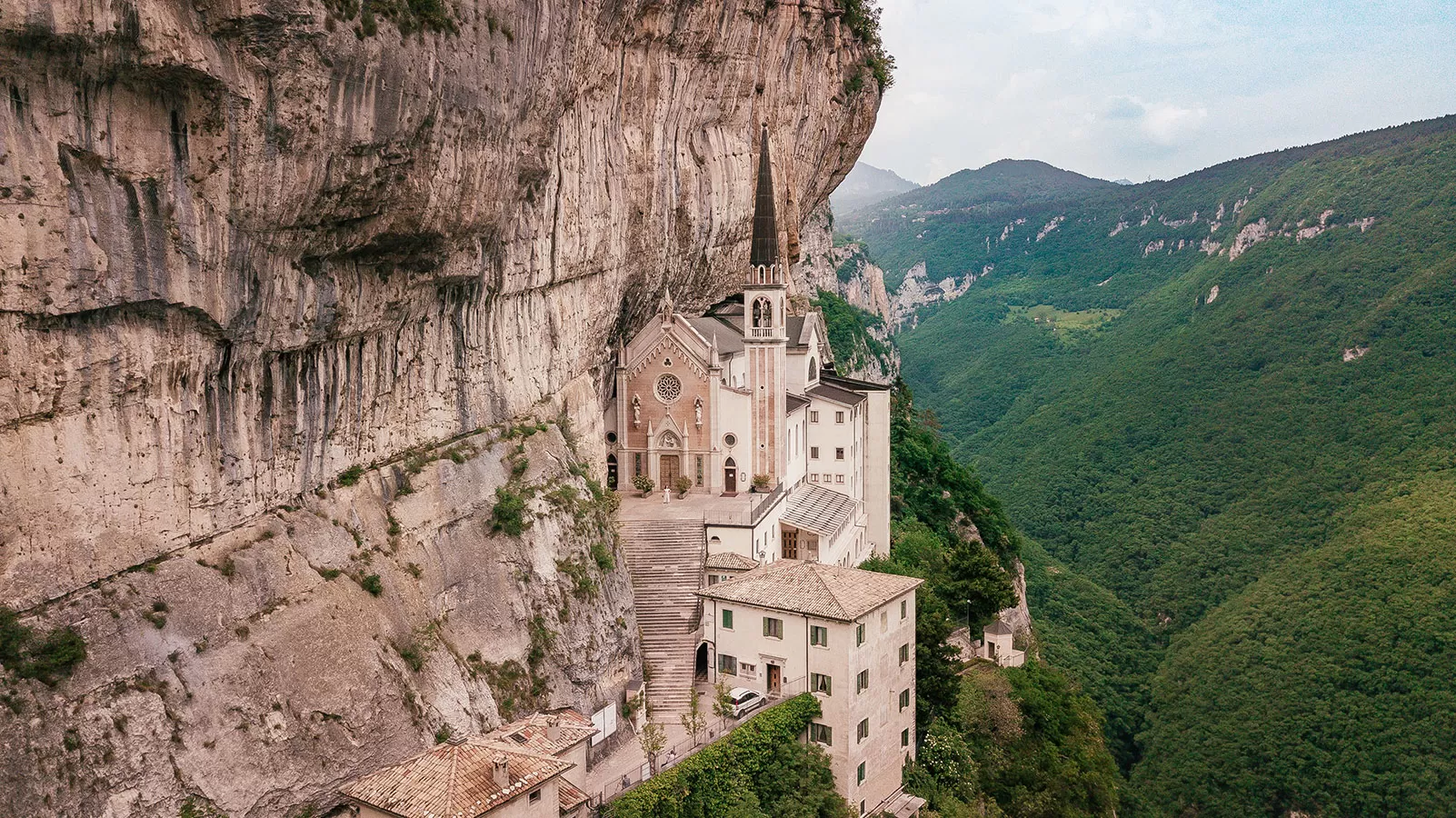 The best time of year to go to Italy will depend on not only the weather and climate conditions but also your idea of travel and what kind of traveller you are. Are you looking for a sunny beach vacation? Are you interested in Italy’s food and wine specialities? Do you want to have a 360° sightseeing experience?
The best time of year to go to Italy will depend on not only the weather and climate conditions but also your idea of travel and what kind of traveller you are. Are you looking for a sunny beach vacation? Are you interested in Italy’s food and wine specialities? Do you want to have a 360° sightseeing experience?
In this section, you will find more information about what to do in Italy according to your travel style (and when to do it).
Best time for festivals and events
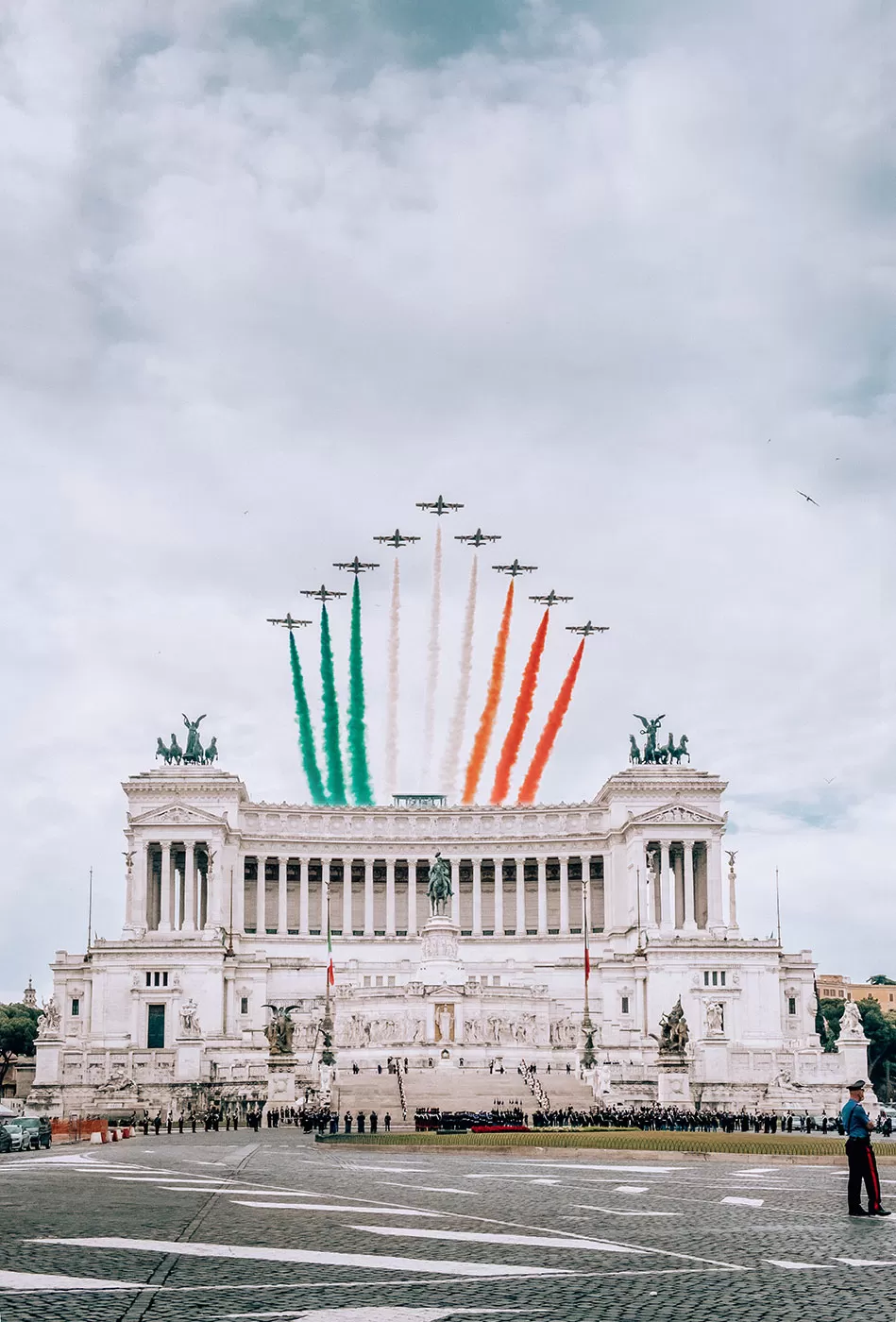
Festa della Repubblica tricolour flyover in Rome
Food festivals, historical re-enactments, art festivals, religious holidays… There is always a good reason to get together and celebrate in Italy! Depending on what you’re most interested in, you can choose to go to Italy at a specific time to visit a place while also taking part in annual festivals, events or holidays: two birds with one stone! Here are the most popular ones:
- Venice Carnival: this iconic event, whose origins are centuries old, usually takes place in February/early March and consists of spectacular events such as masquerade balls, parties, parades, shows and historical re-enactments.
- Festa delle Repubblica is the Italian National Day and Republic Day, which is celebrated on 2 June each year. Celebrations take place in many major Italian cities and include a tricolour flyover by the Military. The main celebrations take place in Rome.
- Giro d’Italia: an annual multiple-stage cycle race held in Italy in May, while also passing through other countries.
- Holy Week: being the centre of Christianity, the Vatican City attracts thousands of visitors every year during the period from Palm Sunday to Easter Sunday.
- Palio di Siena: one of Italy’s most popular festivals, it’s a historic horse race that takes place twice a year (July 2 and August 16) in the main square in Siena.
- Regata storica di Venezia: this boat race is a major sporting event related to a historical re-enactment, which takes place in Venice along the Grand Canal on the first Sunday in September.
- Venice International Film festival: the world’s oldest film festival takes place in Venice in September, along with other related events.
- Infiorata: the festival of floral decorations that occurs in several Italian towns in May and June. The most famous infiorata is in the Sicilian town of Noto.
- Opera festival in Verona: from late June to early September, Verona’s Arena opens its doors for a series of classical live performances.
- Alba’s white truffle fair: This fair takes place in Alba in northern Italy and runs from October to December. It includes gastronomical stands and concerts.
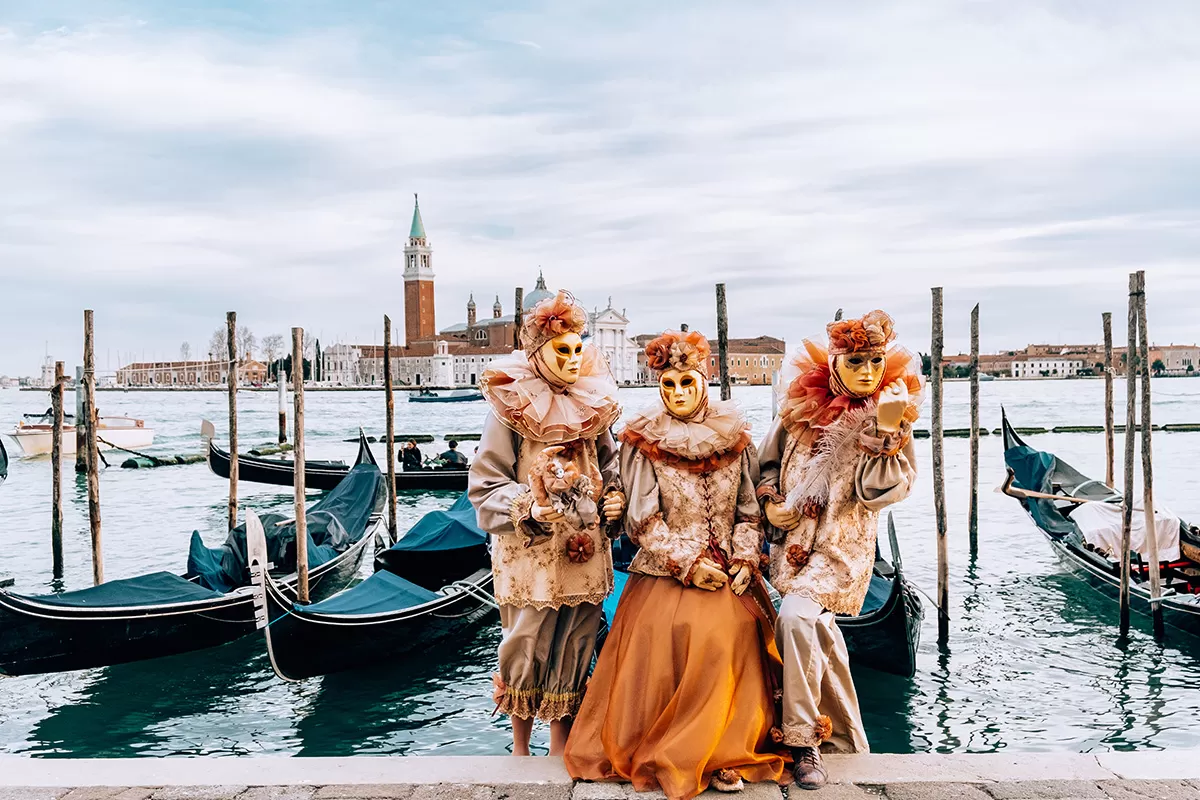
Venice Carnival in February
Best time for sightseeing
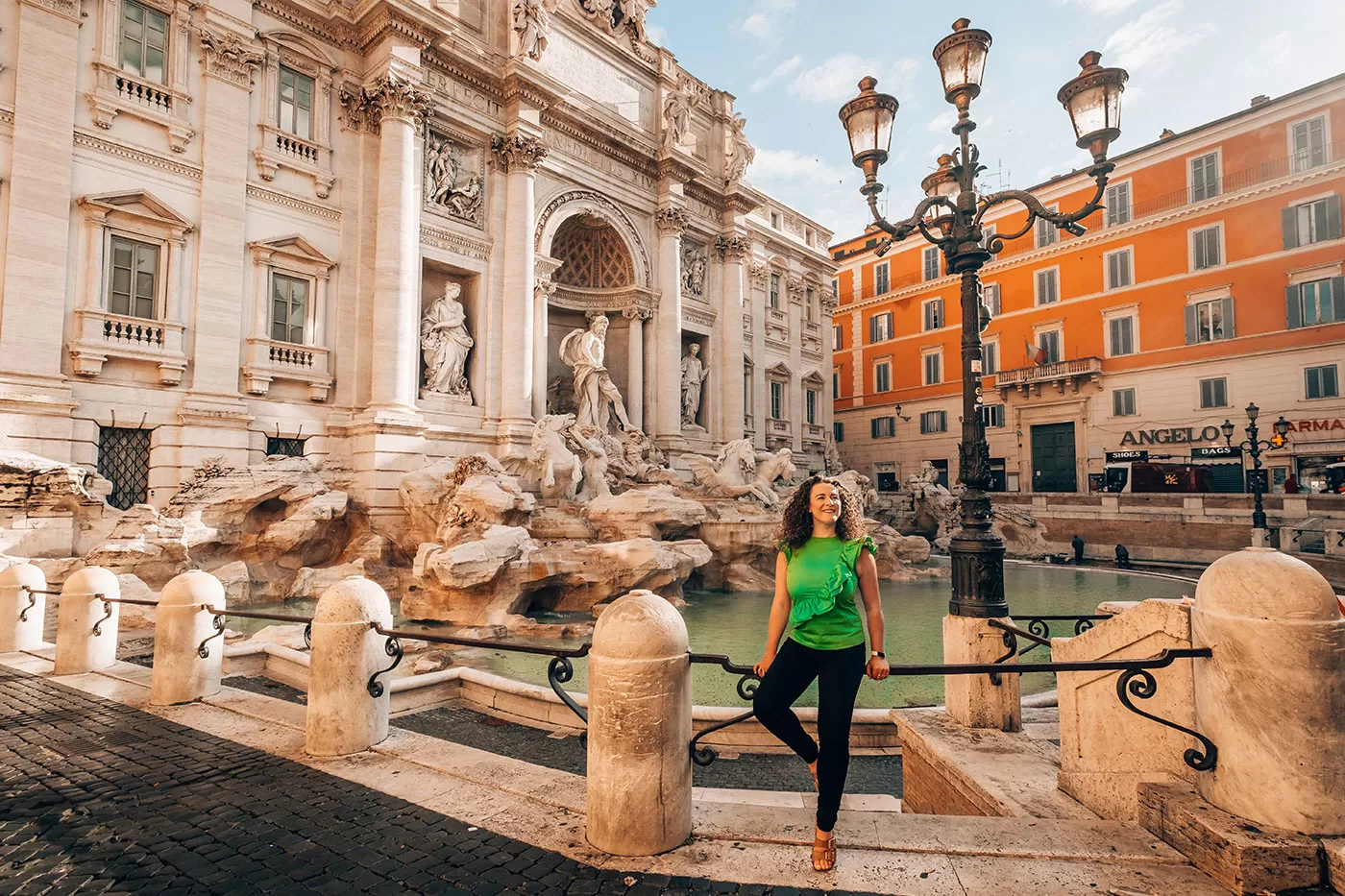
Trevi Fountain in Rome in May
With its long and rich history, Italy offers plenty of things to do and see: churches, archaeological sites, ancient ruins, museums & galleries, meaning: you’ll be doing a lot of walking! Spring and autumn are the ideal seasons for sightseeing in Italy: not only are all attractions open but you won’t need to stand in long queues to enter (like in summer) and you’ll have fewer crowds to contend with.
Winter is also a good time if you’re thinking about hitting museums and galleries. For outdoor attractions, the weather might be a bit too cold though. Keep in mind that in the winter season some attractions may operate shorter hours or be completely closed.
Best time for shopping
Apart from being home to good food, art and culture, Italy is also well known for its fashion. If you want to go to Italy for some made-in-Italy shopping, the best time is definitely during end-of-season sales, which allow for great bargains on all kinds of retail items. Winter sales usually begin after the festive season in the second week of January (until mid-February), while summer sales take place in July and August.
Best time for the beach
The best time to visit Italian beaches is May to September when the weather is warm and the water temperature pleasant. The most popular beach destinations are the Amalfi Coast, Apulia, Sicily, Sardinia, Calabria, Cinque Terre and the Italian Riviera. Keep in mind that some beach clubs are only open from June to August.
Try to avoid the first three weeks of August (especially August 15, when Italians celebrate Ferragosto, a national holiday): this is when most people have their annual holidays and beaches are packed with tourists and locals.
Winter is not the best time to head to the beach: the water might be too cold to swim and some transportation services do not operate as often as in the peak or shoulder season.
Best time for lakes and mountains
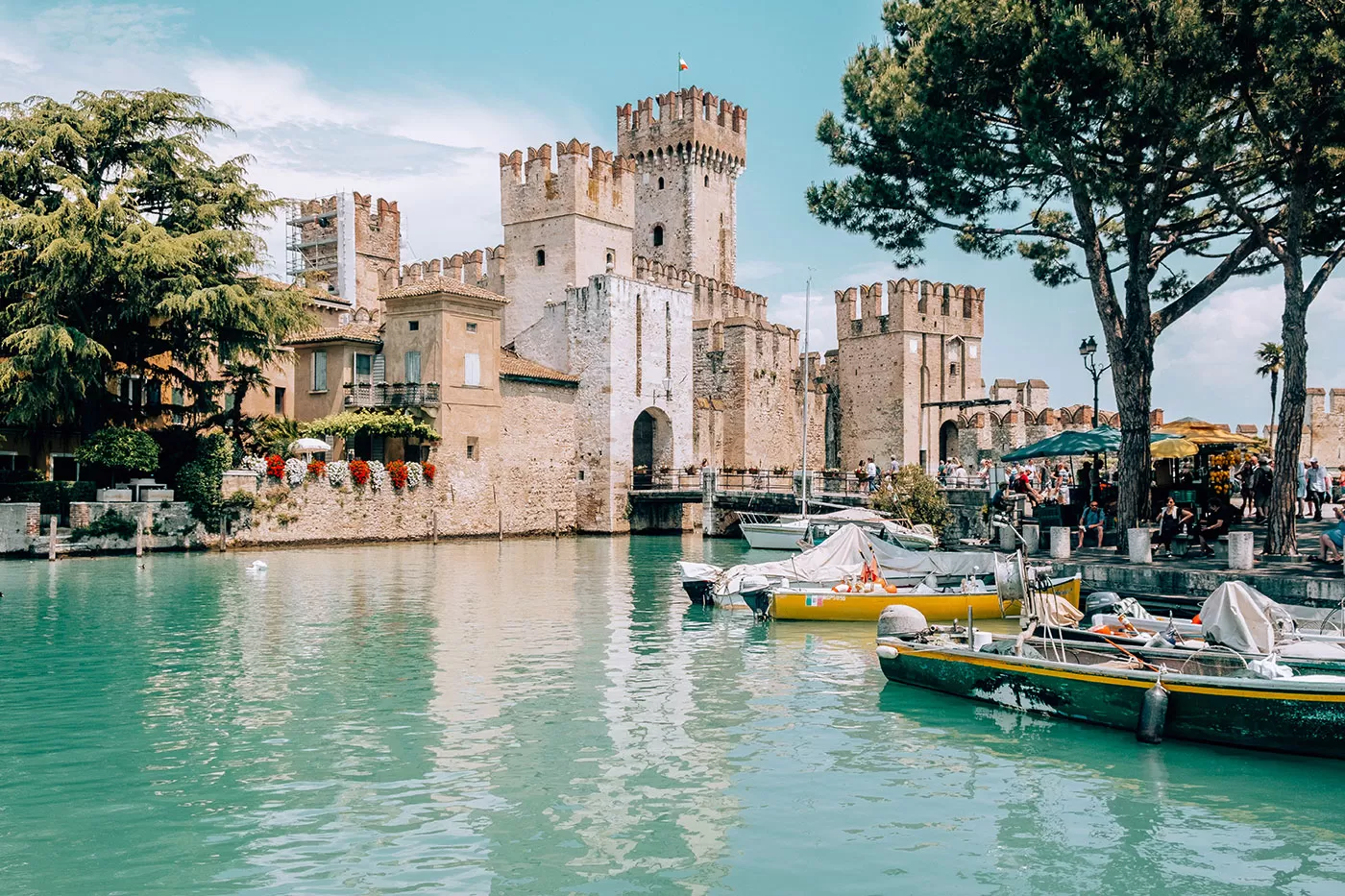
Lake Garda in May
Italy is so much more than stunning beaches and timeless cities! The beautiful scenery offered by the Italian Alps is among of most unique in the world, while Italian lakes with their quaint villages are ideal for a stress-free getaway.
The mountains offer a wide range of activities and experiences to choose from, no matter what season you choose. From May to September, weather conditions are ideal for mountain biking, hiking, climbing and rafting. In the frigid winter months, the alpine landscape is transformed as the mountains are enveloped in a thick blanket of fresh snow. December is the time when the mountains are busiest as tourists and locals flock there for the ski season.
Garda Lake and Como Lake are popular destinations for tourists from all around the world. The best time to enjoy their beauty is definitely April to June and September-October, when the weather is mild enough to go cycling, kayaking or even swimming, but the crowds are smaller than in July and August.
Cheapest time to visit Italy
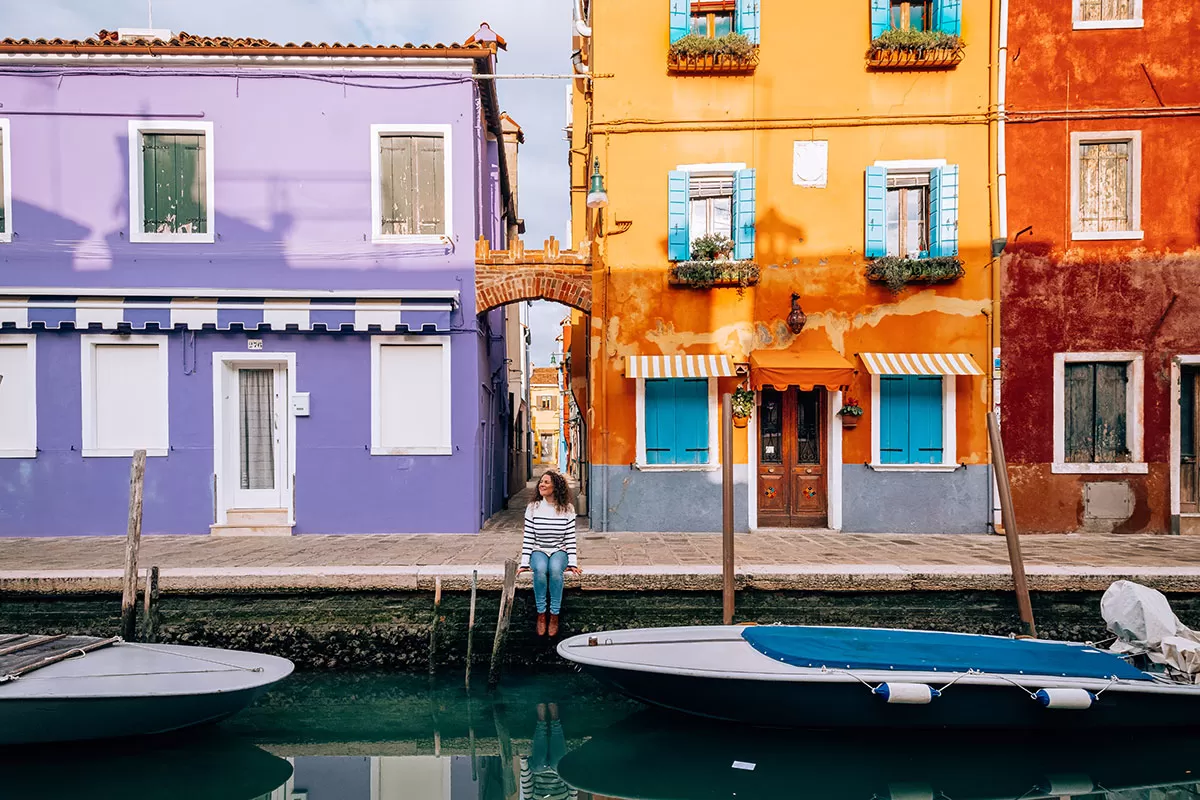
Burano island in February
If Italy has always been on your bucket list but you’re on a low budget, don’t worry! Visiting Italy does not necessarily have to be super expensive. With a few arrangements and adjustments, you can visit Italy on a shoestring budget and enjoy your vacation to the fullest.
In more or less the entire country, the off season starts in November and ends in March. This is when flights, accommodation and tours are the cheapest, with the exception of Christmas and New Year’s festivities. Many places in central and southern Italy still offer mild temperatures during the day (just remember to check the opening times of attractions if you visit during the off season).
For more, don’t miss my Italy travel tips guide that will save you time, money and disappointment
The verdict: When is the best time to visit Italy?
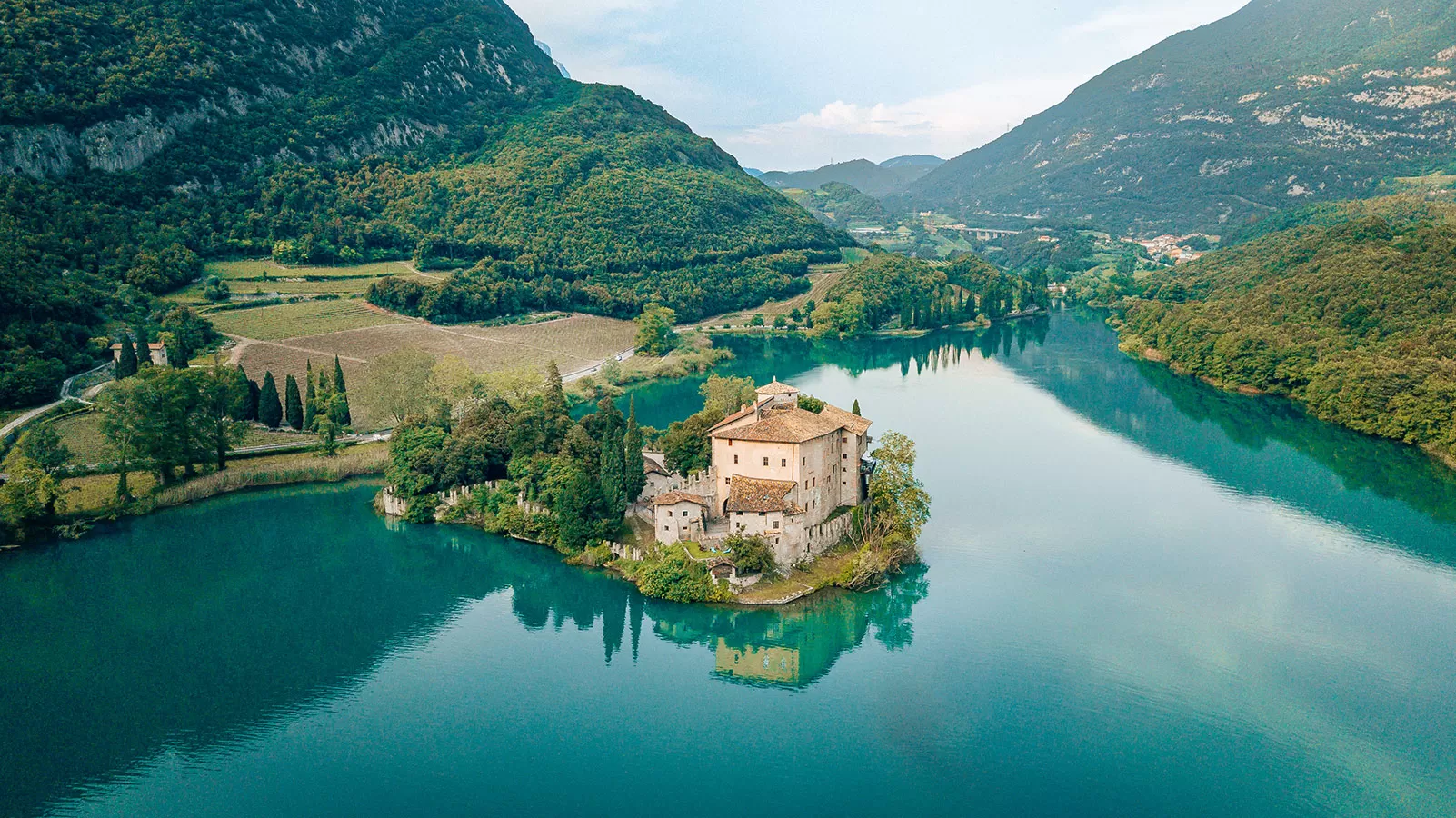 Even though Italy always has something to offer, no matter what season you decide to go there, and though much depends on your travel style or preferences, we can say that the overall best time to visit Italy is in spring, from April to June, or autumn, from September to October.
Even though Italy always has something to offer, no matter what season you decide to go there, and though much depends on your travel style or preferences, we can say that the overall best time to visit Italy is in spring, from April to June, or autumn, from September to October.
Choosing these intermediate seasons will allow you to explore different regions with moderate temperatures and fewer tourists than during the high season.
Regardless of when you visit and what you visit, I’m sure you’ll bring back more than just a Vespa keyring or homemade orecchiette (ear-shaped pasta): you’ll carry wonderful memories in your heart and you’ll be looking forward to returning to see more.
With that said, I wish you safe travels and buon viaggio! (Have a great trip!)
Don’t be treated like a tourist. Learn Italian with my 80/20 method
Travelling to Italy? Don’t be treated like a tourist! Live your best travel experiences and learn Italian for less than the cost of eating at a tourist trap restaurant or a taxi driver who has “taken you for a ride”. I’ve made it easy for you to master the Italian language so you can create lifelong memories as you mingle with locals, get local tips, avoid tourist traps, and make new friends. Who knows, you may be even be invited over for afternoon tea by a lovely Sicilian family like I was! Read all about how speaking Italian changed my life and check out my online Italian video course here.
Here’s what my students are saying:

I really enjoyed the Intrepid Italian course, it certainly exceeded my expectations. The learning methodology is great, and easy to follow and found that I progressed much faster in the last 4 weeks than I ever did on my own or using other language apps. Grazie mille Michele, I can’t wait until I can put my new skills into action! – Roma Small
Click here for instant access!
Don’t miss these Italy travel guides
- 33 Italy Travel Tips That Will Save You Time, Money and Disappointment
- 29 Amazing Day Trips from Rome By Train, Car & Guided Tour
- Rome Tips and Tricks: 27 Things You Should Know Before You Go to Rome
- 21 Best Things to Do in Venice, Italy (From Rooftop Views to Private Tours)
- Top 10 Things to Do in Rome That Aren’t On Your List
- Top 10 Absolute Best Views of Rome That Will Blow Your Mind
- Domus Aurea: Visit Rome’s Secret Hidden Palace
- Self-Guided Trastevere Walking Tour: Where to See Rome’s Most Beautiful Streets
- 12 BEST Things to do in Burano, Italy (Tips from a Local Guide)
- Absolute Best Things to do in Verona, Italy | 26 Must-See Attractions
- 36 Wonderful Things to do in Umbria, Italy (PLUS Map of Umbria)
- Top 7 Authentic Tours and Experiences in Rome [Run by Locals]
- Lakes, Mountains & Castles: 21 Best Things to do in Trento, Italy
- Italy Fun Facts: 126 Unique Things You Didn’t Know About Italy
Planning a trip and need travel insurance? Get a free quote from World Nomads here.
Like it? Pin it for later!
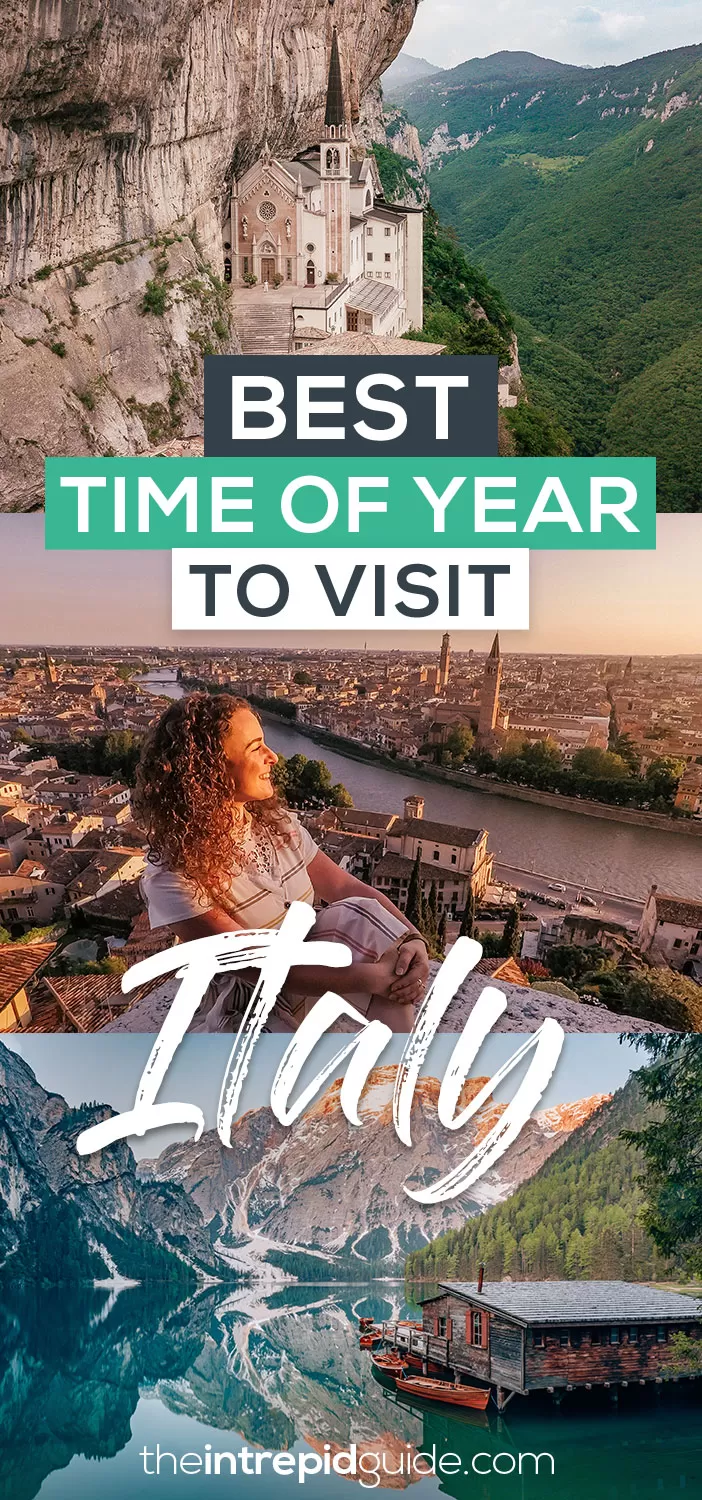
Over to you!
Have you decided what time of year to visit Italy? Got a question? Let me know using the comments section below or join me on social media to start a conversation.
Thanks for reading and I hope you enjoyed this post.
Like what you see? Subscribe using the form below to have all of my posts delivered directly to your email.

